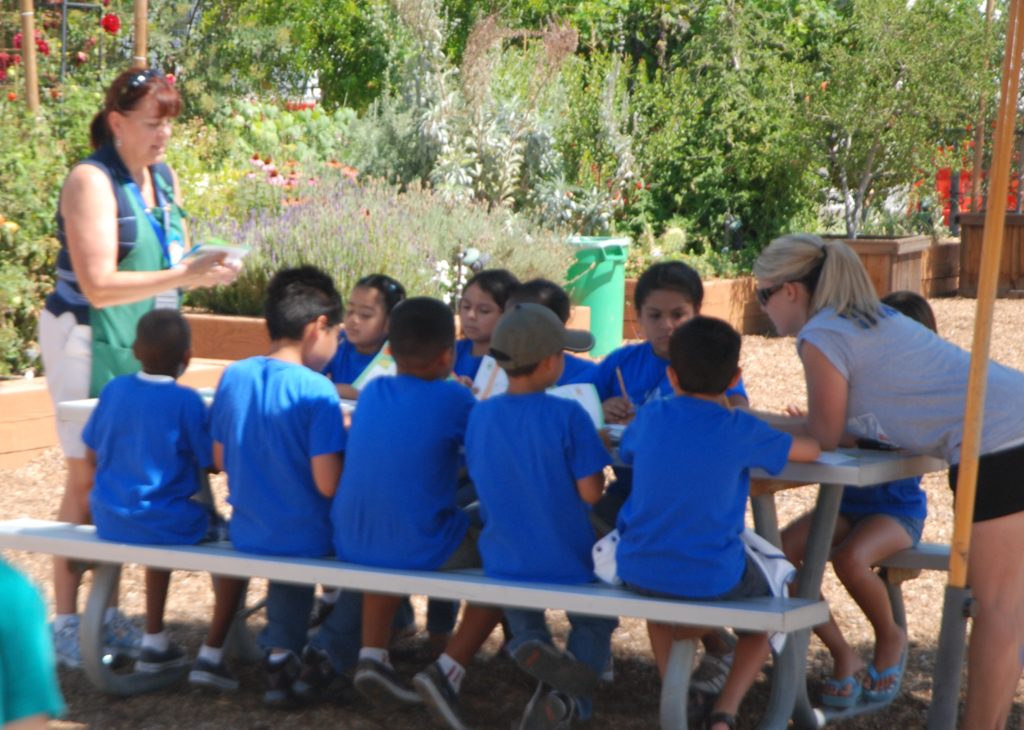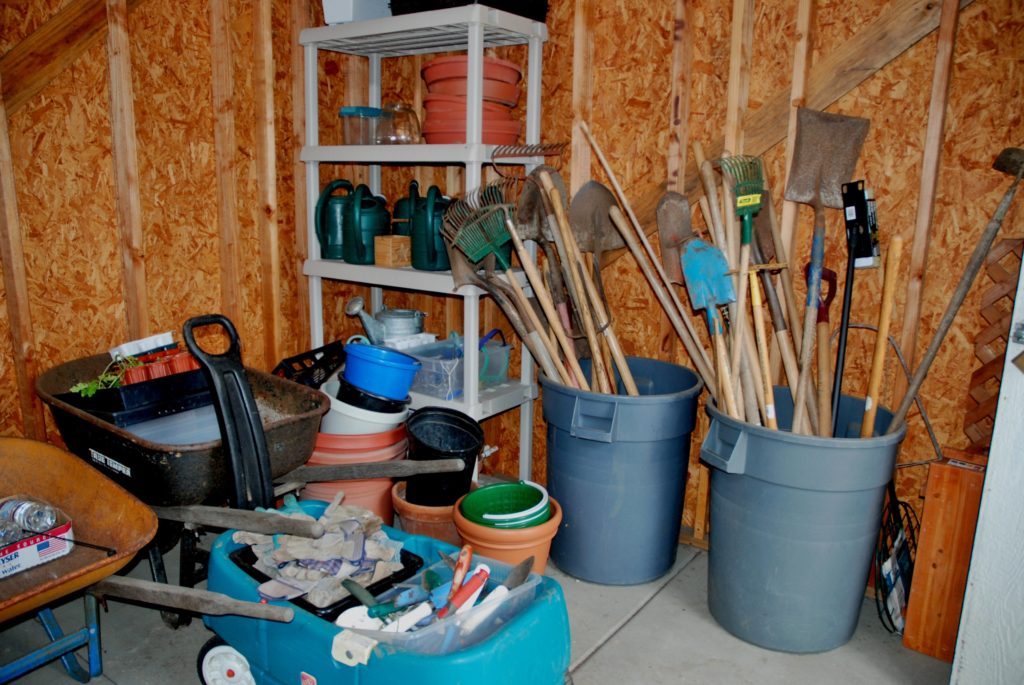Next, we will look more closely at criteria to use to for planning the working spaces of the garden: work benches, compost, storage, and tables and seating. You will need to consider the:
-
- Numbers of teachers and students who will use the garden.
- Space needed for tables for class instruction and as potting benches.
- Space needed for storage of tools and supplies.
- Area needed for composting.
- Resources and materials available for construction and startup costs.
- Start-up money and the annual budget available for garden expenses.
Tables, Workbenches, and Seating for Children and Adults
The garden is an outdoor classroom. Tables provide a space for students to:
-
- Record the data they collect and observations they make in their journals.
- Start seeds, repot seedlings, and pot plants.
- Work on art projects.
- Hold small group interactions such as buddy reading, tutoring, or counseling.
It can be an old discarded table or a wooden wire spool. Or you might choose both a table and a custom potting bench complete with storage bins for planter mixes and shelves for storing pots. Some garden centers and mail order houses sell potting bench kits. Wheelchair accessibility may also affect your design.
Garden benches, where students can sit and read or just enjoy the garden, enhance the environment. Seating also provides a gathering place for adults to interact with students, a teaching station for small group instruction and a place to observe the garden in action. Parent volunteers may be able to construct custom benches for the garden. A workbench that is 24 inches wide x 48 inches long x 30 inches high will accommodate two students.
All wooden surfaces should be painted unless you use a weather-resistant material, such as redwood, cedar, or recycled plastic composite board such as Trex® lumber.

Compost Areas
Composting is an excellent way to teach the complete growing cycle. Provide an area to incorporate the method of composting you plan to use. This can be as simple as layering garden waste on the ground or an elaborate set of bins to hold decomposing materials. Locate your compost in a sunny area, unless you plan to compost with worms. NOTE: Check with your school district for any special rules regarding composting.
Storage
Every garden needs a storage facility for garden tools and supplies. This may be a commercial shed kit, a homemade shed constructed on site, a custodian’s closet, or a manufactured container of wood, metal or plastic. Design one or more storage units for hand tools, wheelbarrows, hoses, and garden amendments.
Construct it to withstand weather, vandalism, and theft. Include a locking device to secure the facility. A practical size for a storage shed is 4 x 8 x 7 feet. Access to the storage shed follows the same A.D.A. Guidelines as those for access to the garden. An alternative is to store tools and supplies in the classrooms.
